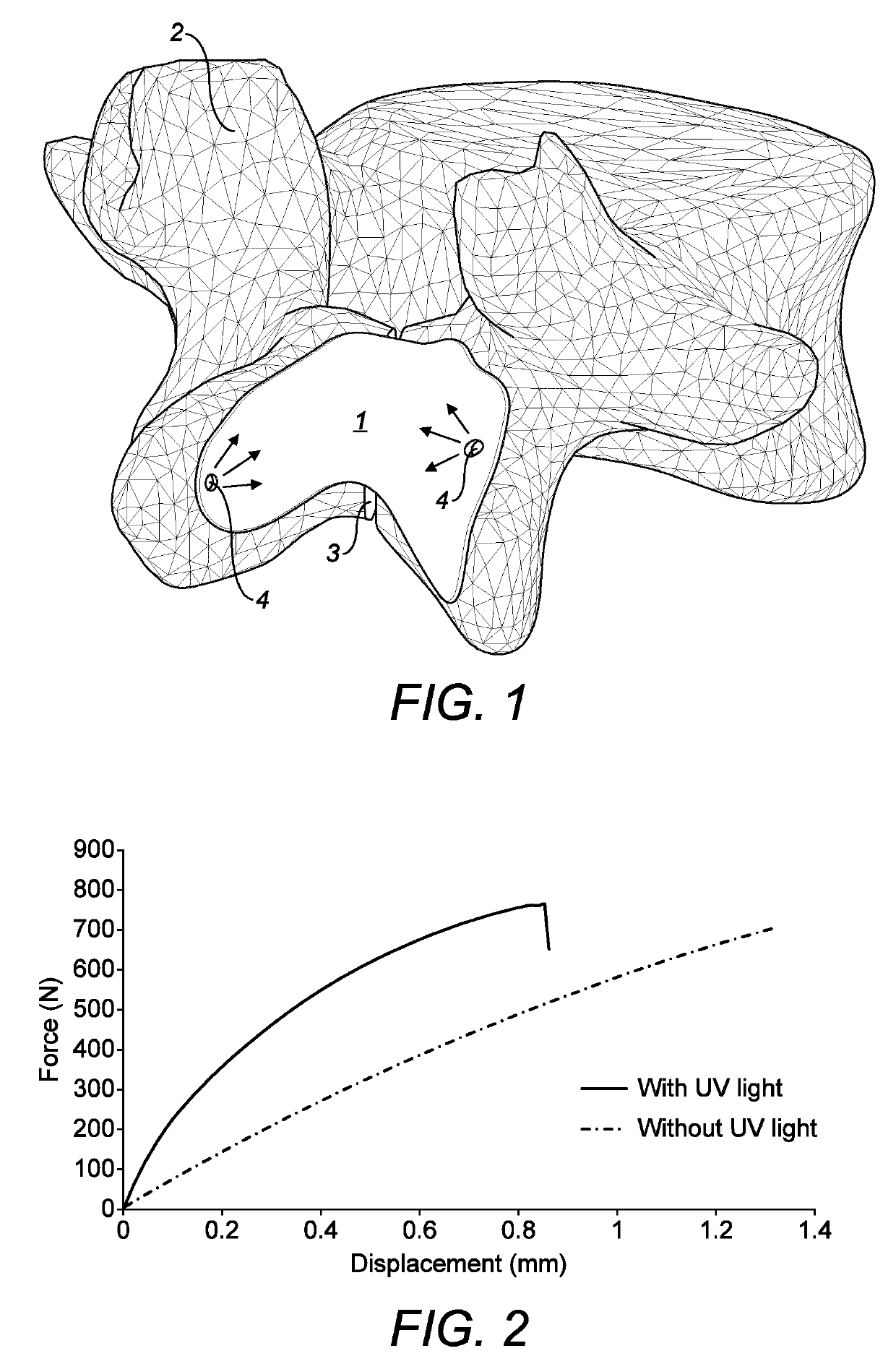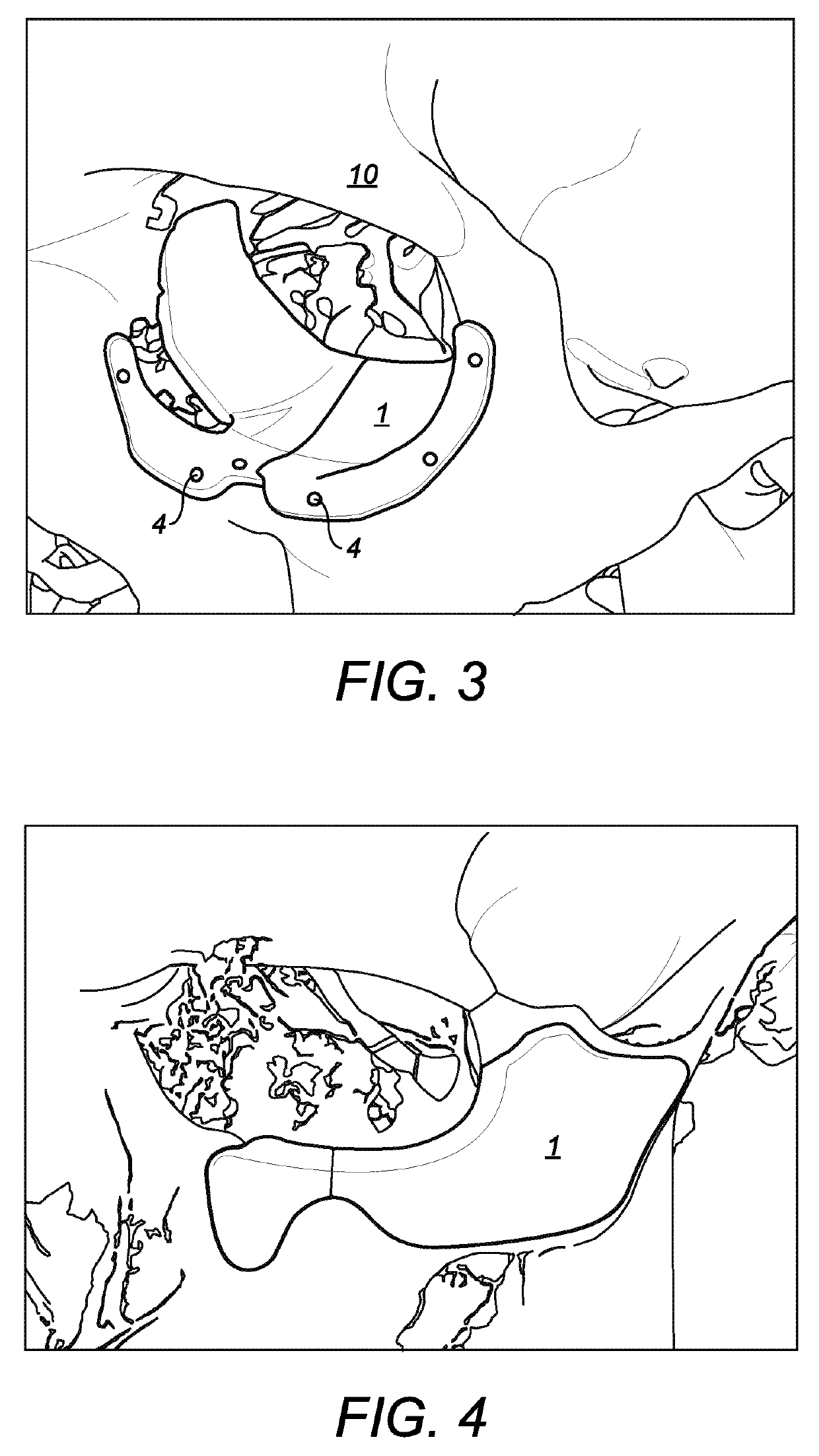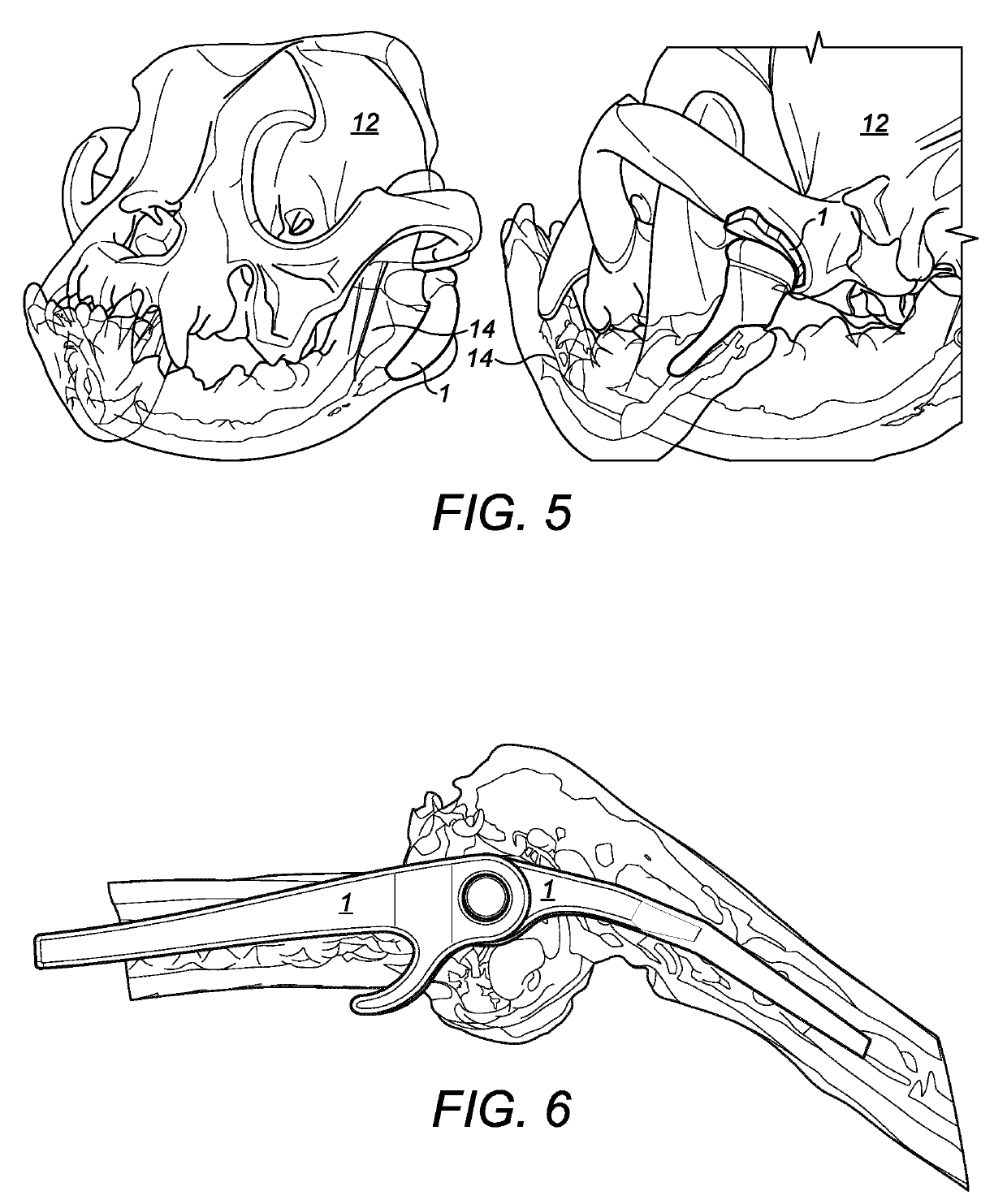Bone implant
- Summary
- Abstract
- Description
- Claims
- Application Information
AI Technical Summary
Benefits of technology
Problems solved by technology
Method used
Image
Examples
Embodiment Construction
[0075]FIG. 1 shows an embodiment of the implant according to the invention. The implant is generally designated 1. The implant is shown attached to a human vertebra 2 which has a lamina defect 3 caused by a stress fracture in the bone. The defect in this case is malformation of the two halves of the vertebra so that there is no structural connection present. This can be a source of lower back pain. However having one of these conditions does not mean that back problems are a certainty. It does however present a higher risk compared to people that don't have the defect, towards developing pain. These conditions can cause mechanical pain, which is the kind of pain that come from within the moving parts of the spine. These conditions can also cause compressive pain, which is derived from pressure on the nerves in the lower back.
[0076]The implant 1 is custom made, which means that it is manufactured to specifically fit against the individual vertebra shown with the inside surface of the...
PUM
| Property | Measurement | Unit |
|---|---|---|
| Time | aaaaa | aaaaa |
| Volume | aaaaa | aaaaa |
| Volume | aaaaa | aaaaa |
Abstract
Description
Claims
Application Information
 Login to View More
Login to View More - R&D
- Intellectual Property
- Life Sciences
- Materials
- Tech Scout
- Unparalleled Data Quality
- Higher Quality Content
- 60% Fewer Hallucinations
Browse by: Latest US Patents, China's latest patents, Technical Efficacy Thesaurus, Application Domain, Technology Topic, Popular Technical Reports.
© 2025 PatSnap. All rights reserved.Legal|Privacy policy|Modern Slavery Act Transparency Statement|Sitemap|About US| Contact US: help@patsnap.com



